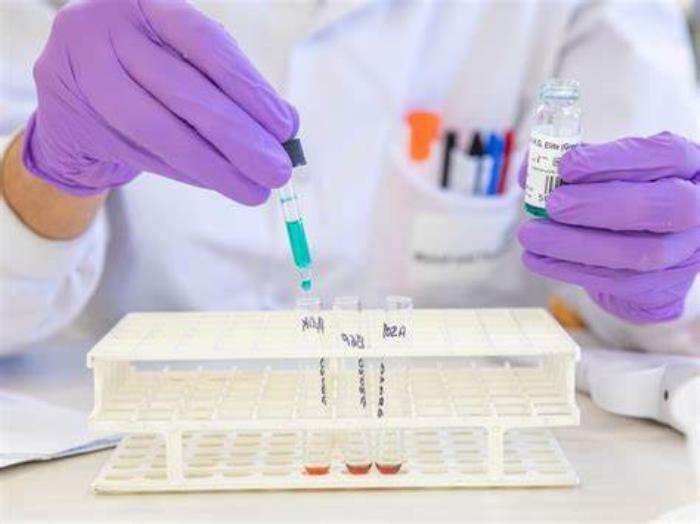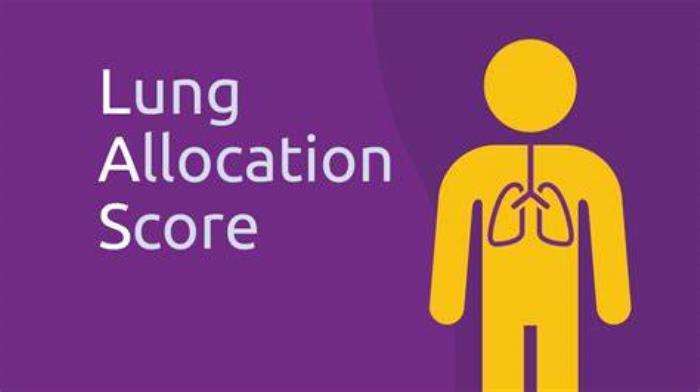Organ matching in lung transplantation is critical to ensure the recipient’s body accepts the donor lung and minimizes the risk of complications. A well-matched lung increases the chances of graft survival, reduces the likelihood of rejection, and improves long-term health outcomes for the recipient. This matching process involves assessing multiple factors, such as blood type, tissue compatibility, and lung size, to optimize the transplant's success and the recipient's quality of life.
Key Factors Considered in Lung Matching
Lung matching involves evaluating several key factors, including blood type compatibility, tissue typing, lung size, and donor-recipient health parameters. These factors are analyzed to ensure the donated lung is suitable for the recipient, reducing the risk of rejection and complications. Geographic proximity between the donor and recipient is also considered to ensure the lung remains viable during transportation.
Role of Blood Type in Lung Transplant Matching
Blood type compatibility is essential in lung transplant matching because mismatched blood types can trigger an immune response, leading to rejection of the donor lung. Matching the donor and recipient’s blood types helps ensure that the recipient's immune system does not identify the new lung as foreign, thus reducing complications and improving the success rate of the transplant.

Understanding Tissue Typing and HLA Matching
Tissue typing, including Human Leukocyte Antigen (HLA) matching, is a critical step in lung transplantation. HLAs are proteins on cell surfaces that play a significant role in immune system function. A closer match between the donor and recipient’s HLA markers reduces the risk of acute and chronic rejection, enhancing the long-term success of the lung transplant.
How Size Compatibility Affects Lung Transplant Success
Size compatibility between the donor lung and the recipient’s chest cavity is vital for a successful lung transplant. An improperly sized lung can cause issues with ventilation and blood flow, leading to complications. Careful measurement ensures the donor lung fits well, functions efficiently, and provides the recipient with optimal respiratory support.
Role of Donor Age and Lung Health in Matching
The age and health of the donor play an important role in lung transplant matching. Lungs from younger and healthier donors typically have better elasticity and function, which can contribute to improved outcomes for the recipient. Donor age and medical history are evaluated to ensure the lungs are in good condition and suitable for transplantation.
Geographic Proximity and Its Impact on Organ Matching
Geographic proximity between the donor and recipient is a critical factor in organ matching due to the time-sensitive nature of lung transplantation. Lungs must be transplanted within a short window after removal to maintain their viability. Shorter transportation times reduce the risk of organ damage, increasing the likelihood of a successful transplant.
Urgency of the Recipient’s Condition in Lung Allocation
The urgency of the recipient’s condition plays a critical role in lung allocation. Patients with rapidly deteriorating health or life-threatening conditions are often prioritized to ensure survival. This assessment is made based on clinical factors such as oxygen dependency, pulmonary artery pressure, and overall organ function. By prioritizing based on urgency, the allocation system aims to save lives in the most immediate danger.
Lung Allocation Score (LAS): What It Means
The Lung Allocation Score (LAS) is a numerical system used to prioritize candidates for lung transplantation. The score ranges from 0 to 100 and is calculated based on the patient’s medical condition, likelihood of survival post-transplant, and urgency of need. Factors such as age, body mass index, and test results like blood gas levels contribute to the LAS, making it a crucial tool in equitable and effective lung allocation.

Cross-Matching: Ensuring a Suitable Match
Cross-matching involves testing the recipient’s blood against the donor’s to check for immune compatibility. This process is vital to prevent hyperacute rejection, a severe and immediate reaction to the transplanted lung. Laboratories conduct these tests to identify antibodies that might target donor tissues, ensuring a safe and viable match for transplantation.
The Role of Immune Suppression in Lung Transplants
Immune suppression medications are essential to prevent the recipient’s body from rejecting the transplanted lung. These drugs work by inhibiting the immune system’s response to foreign tissues, thereby reducing the risk of rejection. Long-term adherence to immune suppression therapy is critical, though it also requires managing side effects like increased susceptibility to infections.
Overcoming Sensitization in Lung Transplant Recipients
Sensitization occurs when a recipient has pre-existing antibodies that react to donor antigens, complicating the matching process. Strategies to overcome sensitization include plasmapheresis, intravenous immunoglobulin (IVIG) treatments, and the use of desensitization protocols. These approaches aim to reduce antibody levels, increasing the likelihood of a successful transplant.
What Happens When No Perfect Match Is Available?
When no perfect match is available, surgeons and medical teams evaluate the feasibility of accepting a less-than-ideal donor. Factors such as partial HLA mismatches or size differences may be considered. While such transplants carry higher risks, they may still be lifesaving for critically ill patients.
Ethical Considerations in Lung Organ Matching
Ethical considerations in lung organ matching revolve around fairness, urgency, and medical utility. Questions arise about prioritizing younger patients, those with rare conditions, or individuals with better prognoses. Transparency and adherence to established guidelines ensure ethical decision-making in this life-saving process.
How Artificial Intelligence Is Improving Matching Processes
Artificial intelligence (AI) is revolutionizing lung transplant matching by analyzing vast datasets to predict compatibility and outcomes. Machine learning algorithms assess factors like organ size, blood type, and recipient health to suggest optimal matches. AI also helps streamline logistics, reducing the time between donation and transplantation.
Pediatric Lung Transplant Matching: Special Considerations
Pediatric lung transplant matching requires tailored approaches due to differences in organ size, growth potential, and immune system maturity. Special attention is given to ensuring that donor lungs are appropriately sized and matched to minimize complications. Pediatric candidates are often prioritized to address their unique needs and vulnerability.
Addressing Disparities in Organ Matching and Allocation
Disparities in organ matching and allocation arise from socioeconomic, geographic, and demographic factors. Efforts to address these disparities include increasing awareness, promoting equitable distribution policies, and improving access to transplant centers. These measures aim to ensure that every eligible patient has a fair chance of receiving a transplant.
Challenges in Matching Lungs for Rare Blood Types
Finding compatible lungs for recipients with rare blood types can be challenging due to limited donor availability. This often leads to longer waiting times and greater urgency. Expanding the donor pool through increased organ donation awareness and advanced matching techniques can help address these challenges.
Future Innovations in Lung Transplant Matching
Future innovations in lung transplant matching include advancements in bioprinting, xenotransplantation, and enhanced genetic screening. Bioprinting could allow the creation of customized lungs, while xenotransplantation explores the use of genetically modified animal organs. These breakthroughs promise to expand the availability of compatible organs.
The Role of Advanced Imaging in Lung Transplant Evaluation
Discover the role of advanced imaging in lung transplant evaluation. This article explains how cutting-edge imaging techniques like CT scans, MRI, and PET scans are used to assess lung function and suitability for transplantation, aiding doctors in making informed decisions.
The Role of Organ Donation Awareness in Lung Transplantation
Organ donation awareness plays a pivotal role in increasing the availability of lungs for transplantation. Campaigns to educate the public about the importance of registering as organ donors can significantly reduce waiting times. Awareness efforts also emphasize the life-saving impact of organ donation.
Best Lung Transplant in India
The Best Lung Transplant in India offers a vital treatment option for patients with end-stage lung diseases, combining advanced surgical expertise with comprehensive post-transplant care.
Best Lung Transplant Hospitals in India
The Best Lung Transplant Hospitals in India are equipped with cutting-edge technology and experienced transplant teams, ensuring seamless care and improved outcomes for patients.
Lung Transplant Cost in India
The Lung Transplant Cost in India is structured to provide affordability while maintaining high standards of medical care and long-term support for patients.
Best Lung Transplant Surgeons in India
The Best Lung Transplant Surgeons in India are highly skilled in handling complex transplant cases, offering precise surgical interventions and personalized patient care for successful recoveries.
FAQ Section
1. What is the Lung Allocation Score (LAS)?
The Lung Allocation Score (LAS) is a system used to prioritize lung transplant candidates based on medical urgency and potential post-transplant outcomes. The score ensures that lungs are allocated to those in greatest need while maximizing the likelihood of successful transplantation.
2. How is blood type compatibility determined for lung transplants?
Blood type compatibility is determined by matching the donor and recipient’s ABO blood groups. This ensures that the recipient’s immune system does not attack the transplanted lung, reducing the risk of rejection.
3. Why is size compatibility important in lung transplantation?
Size compatibility is crucial because the donor lungs must fit properly within the recipient’s chest cavity. Mismatched lung sizes can lead to complications such as poor lung function or difficulty in the surgical procedure.
4. Can a living donor provide a lung for transplant?
Yes, in some cases, a living donor can provide a lobe of their lung for transplant. However, living donor transplants are less common and typically involve two donors to provide lobes for a single recipient.
5. How long does it typically take to find a lung transplant match?
The time to find a lung transplant match varies depending on factors such as blood type, lung size, and the recipient’s LAS. It can range from days to several months, with urgent cases being prioritized.